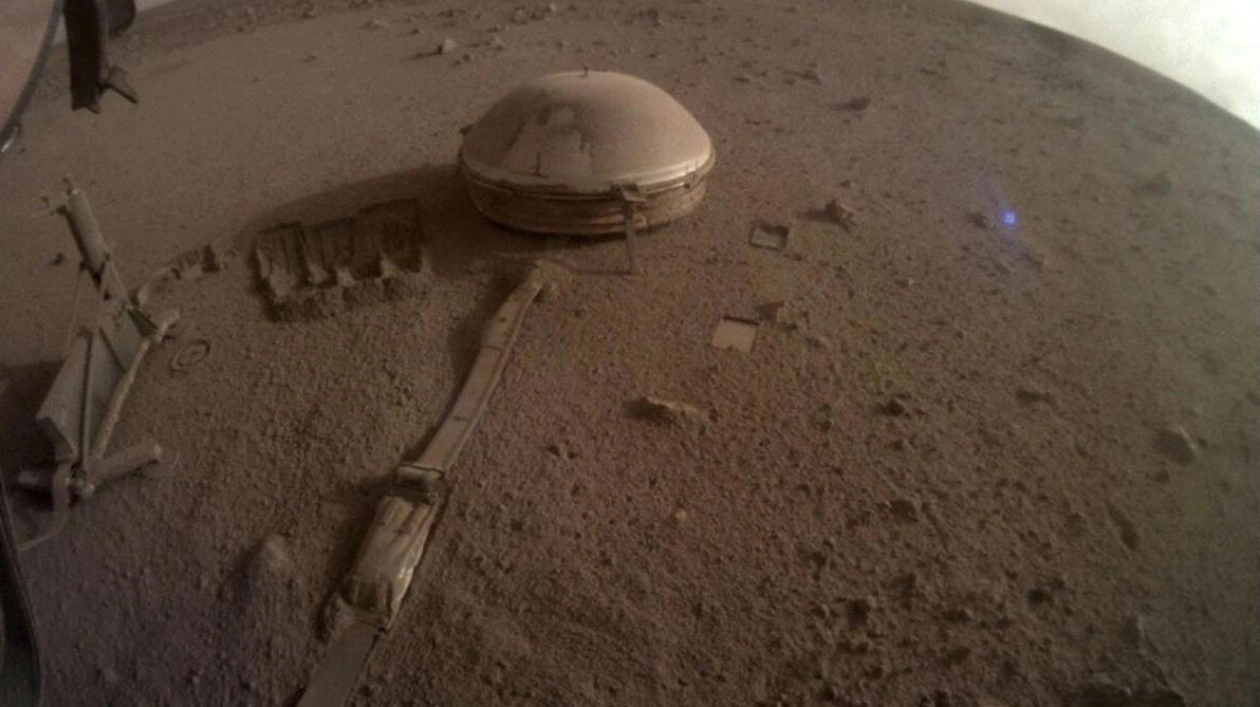A vast pool of liquid water could be concealed deep beneath the surface of Mars, within fissured igneous rocks, containing enough to create an ocean that would envelop the entire surface of Earth's neighboring planet. This is the assertion of scientists who analyzed seismic data from NASA's robotic InSight lander, which contributed to understanding the interior of Mars. The water, situated approximately 7.2 to 12.4 miles (11.5 to 20 km) beneath the Martian surface, might provide conditions conducive to supporting microbial life, either historically or currently, according to the researchers.
"At these depths, the crust is sufficiently warm for water to remain in a liquid state. At shallower depths, the water would be locked in ice," explained planetary scientist Vashan Wright from the University of California, San Diego's Scripps Institution of Oceanography, who is the lead author of the study published in the Proceedings of the National Academy of Sciences.
"On Earth, microbial life is found deep underground where rocks are permeated with water and there's an energy source," added planetary scientist and co-author Michael Manga of the University of California, Berkeley. The InSight lander, which landed in 2018 to investigate the deep interior of Mars, collected data on the planet's layers, from its liquid metal core to its mantle and crust. The mission concluded in 2022.
InSight was capable of measuring the velocity of seismic waves and how they vary with depth. The speed of these waves is influenced by the composition of the rock, its fractures, and what fills them, according to Wright. "We integrated the measured seismic wave speeds, gravity measurements, and rock physics models, which are the same as those used to assess properties of aquifers on Earth or map underground oil and gas resources."
The data revealed the existence of this liquid water reservoir within fractured igneous rocks in the Martian crust. "A mid-crust filled with cracked rocks and liquid water best accounts for both seismic and gravity data," Wright stated. "The water is present within fractures. If the InSight site is representative and you could extract all the water from the mid-crust fractures, we estimate it would fill a 1-2 km deep ocean across Mars."
The Martian surface is currently cold and barren, but it was once warm and wet, a change that occurred over 3 billion years ago. The study indicates that much of the water that was on the Martian surface did not vanish into space but seeped into the crust. "Early Mars had liquid water on its surface in rivers, lakes, and possibly oceans. The crust on Mars might also have been saturated with water from its early history," Manga noted. "On Earth, groundwater seeped underground from the surface, and we anticipate a similar history for water on Mars, especially during a period when the upper crust was warmer."
Water would be a crucial resource if humans were to send astronauts to Mars or establish a long-term settlement. Mars holds water in the form of ice in its polar regions and subsurface, but accessing the apparent underground liquid water would be challenging due to its depth. "Drilling to these depths is extremely difficult. Searching for areas where geological activity releases this water, such as the tectonically active Cerberus Fossae, could be an alternative to accessing deep liquids," Manga said, while acknowledging the need to consider environmental protection on Mars.






